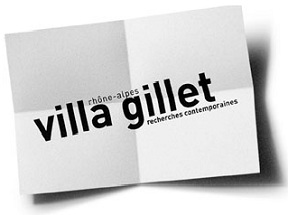For Free Union in Criticism
Pierre Bayard est né en 1954. Il est écrivain, professeur de littérature française à l'université de Paris-VIII et psychanalyste. Il est l'auteur de nombreux ouvrages, dont Comment parler des livres que l'on n'a pas lus ? (Minuit, 2007) et Et si les œuvres changeaient d'auteur ? (Minuit, 2010)
Crab is not one of those who says: there is no way to compare this thing or that. He sees no reason why he shouldn't be able to compare a dog, say, with a needle. Indeed, nothing could be easier than to note their differences, their respective advantages and peculiar qualities, and other characteristics such as size, weight, volume, etc. One then has only to confront these and weigh them in the balance, at which point Crab decides authoritatively in favor of either the dog or the needle, the sun or the ashtray, hatred or an orange, the countryside or an umbrella, exile or reading, a certain philosopher or lead. And if anyone expresses surprise, he patiently repeats his demonstration, point by point, in different terms.
Eric Chevillard, La Nébuleusue de crabe, Minuit, 1993
The idea of attributing old works to new authors is not original. It has long been practiced by those lovers of literature, our students, who do not hesitate to attribute The Old Man and the Sea to Melville or War and Peace to Dostoevsky. What is interesting is that this kind of reinvention is not always properly appreciated by teachers.
Students are not the only readers to practice reattribution. Scientific discoveries have on occasion forced historians of literature - and even more, of art - to ascribe works to creators other than those to whom they were at first incorrectly attributed.
Above all, writers themselves frequently practice reattribution on themselves, for their own benefit. The use of pseudonyms, as old as literature itself, shows that writers have always been aware that they might profit by finding a way to have their texts read without being encumbered by their own image.
The example of Romain Gary, who won the Prix Goncourt a first time under his own name and a second time under the name Émile Ajar, illustrates the reasons why so many authors resort to pseudonyms. Celebrated for his wartime exploits and his marriage to Jean Seberg, Gary complained that he was no longer read for what he was but only through the prism of his image.
In his posthumous text, Vie et mort d'Émile Ajar (Life and Death of Émile Ajar), he explained how he felt imprisoned by the image that had taken his place ("They gave me a new face"), so that the only solution available to him was to invent a new writer to represent him and to enable readers to encounter the naked text, without prejudice due to his reputation.
The practice of reattribution is intended precisely to attack the image of the author. By isolating the work from conventional representations that threaten to interfere with reading, it aims to get back to the text by increasing its polysemy, that is, the number of potential affinities with other works and other authors.
*
Take the example of Kafka's Stranger. Too much has been made of the schizophrenic aspect of the character Meursault, of his difficulty in communicating with others, while ignoring the political side of the Czech writer's last novel, the way in which, after The Trial and The Castle, he was once again able to write about the difficulty that the subject of an authoritarian state faces in attempting to make himself heard by those in power.
In this reattribution of The Stranger to Kafka, which opens the way to political rather than just psychological readings of the text, the work is not the only beneficiary. Kafka ceases to be confined to painting portraits of totalitarian societies. The fact that he completed his oeuvre with a novel set in Algeria shows that his thinking about the powerlessness of the subject vis-à-vis the state is relevant to countries other than those that he originally had in mind.
Similarly, Tolstoy has everything to gain if Gone With the Wind is added to his corpus. In this novel, he grafted tales of the Napoleonic wars, which he had heard in childhood, onto the experience of the American Civil War. His work, previously centered in Russia, thus took on a more universal dimension by including the history of North America.
At the same time, certain enigmas of Gone With the Wind can be dispelled, starting with the personality of Scarlett. The reader can now see how much she owes to her Slavic origins, as well as Tolstoy's unconscious effort to shift his fear of the feminine to a geographically more remote and therefore less threatening figure.
Reattributions are not necessarily one-way affairs, moreover. It is common to confound D. H. Lawrence with T. E. Lawrence, both being English writers with identical last names who use initials instead of first names and were born not too far apart. This confusion is unfortunate because their worlds are so different, D. H. Lawrence's being marked by eroticism, in contrast to T. E. Lawrence's, marked by repression.
But this confusion is also instructive. Thanks to a double reattribution, via a process of critical swapping, The Seven Pillars of Wisdom, authored by D. H. Lawrence, reveals a subtle eroticism in its descriptions of relations among soldiers, whereas Lady Chatterley's Lover, written by the soldier T. E. Lawrence, identified with the character of Chatterley, a wounded veteran, becomes an agonizing description of a man made desperate by the discovery that he is losing the woman he loves.
*
Literary works are not the only texts to benefit from reattribution. The world of philosophy is also enlarged and revitalized. Too little attention has been devoted to Freud's Ethics, for example, a text in which the founder of psychoanalysis attempts to reconcile his discovery of the unconscious with belief in God.
Although he had always shown hostility to religion, he here transforms dogma by inventing a sort of secular pantheism, which enables him to reconcile the hypothesis of the unconscious with a form of faith and to construct a new theory of desire appropriate to a world in which everything, God included, is subject to intangible laws. In this new theory of desire, the notion of "drives" replaces that of affectus.
And what about film, which is yet another rich field for reattribution in the service of authors as well as works. Through study of Hitchcock's Potemkin, for example, we can interpret certain scenes, such as the famous Odessa steps sequence, in a new light. By skillfully manipulating the viewer's anxiety, the director was able to use crowd scenes to depict the subject's confrontation with unfolding History.
As Potemkin shows yet again, Hitchcock was not, as some would claim, merely a director of thrillers and tall blondes. From Notorious to Torn Curtain and Topaz, he was also an author who reflected constantly on the role of history in human existence and on the way in which individuals transcend themselves in order to find their place in history.
Reattribution can even be attempted across different arts. Everyone knows the celebrated painting of Robert Schumann, The Scream, in which a ghostly figure with a terrified expression presses his hands to his ears as if to protect himself against a scream, which is not so much the scream of a single person as that of the entire earth, which is out to destroy him.
Thus Schumann, the victim of auditory hallucinations like the figure in his painting and equally terrified of the evil waters in which he will ultimately attempt to drown himself, put into his painting the intense fear from which he managed to protect his music, thereby inciting a fresh confrontation between different arts not only in his own case but also more generally.
*
The practice of reattribution obviously implies a certain number of modifications in the way in which we conceive of literature and art, starting with the question of the author. A period dominated first by the supremacy of the author and later by his death may give way to a period dominated by exchange, that is, by the fiction of virtual authors that works might have had.
Such fictionalization in no way implies neglect of the author's place in his creation, as in the previous period. On the contrary, it calls attention to the richness of the work and to the way in which it transcends the author and brings into play a number of aesthetic dimensions that can be perceived more readily once the author is removed as an obstacle to their perception.
Reattribution also relies on extension of affinities. Our search for affinities in the fields of comparative literature and art is often unduly restrictive. We compare only closely related things, not to say nearly identical things, rather than look for more hidden links between creators and works.
The extension of affinities means that we must replace simple comparison with active metaphors. Such metaphors go beyond revealing resemblances. They effect a veritable substitution by way of what we might call structured metempsychosis: we examine what the author might have been in a different world, as well as what he is by virtue of what he was able to grasp from the realm of possibilities.
Third, reattribution encourages us to pay attention to parallel worlds. The world in which Kafka wrote The Stranger and Tolstoy wrote Gone With the Wind is not our world, to be sure, but it does enjoy a kind of existence among all the possible worlds among which God ultimately chose, and for that reason it is worthy of consideration.
For these other worlds interfere with ours, and creators are better equipped than we are to sense their vibrations and echoes. They explain the mysterious affinities that join us to certain beings and make us feel close to certain authors, who do not have the same identity in these alternative worlds. By trying as they do to inhabit several of these worlds at once, we can hope to grasp what their works brings to the comprehension of our world.
Cette ressource a été publiée dans le cadre de la troisième saison du festival "Walls and Bridges" qui s'est déroulée du 19 au 28 octobre 2011 à New York.
Pour citer cette ressource :
Pierre Bayard, Arthur Goldhammer, For Free Union in Criticism, La Clé des Langues [en ligne], Lyon, ENS de LYON/DGESCO (ISSN 2107-7029), février 2012. Consulté le 25/12/2025. URL: https://cle.ens-lyon.fr/anglais/litterature/entretiens-et-textes-inedits/for-free-union-in-criticism



 Activer le mode zen
Activer le mode zen


